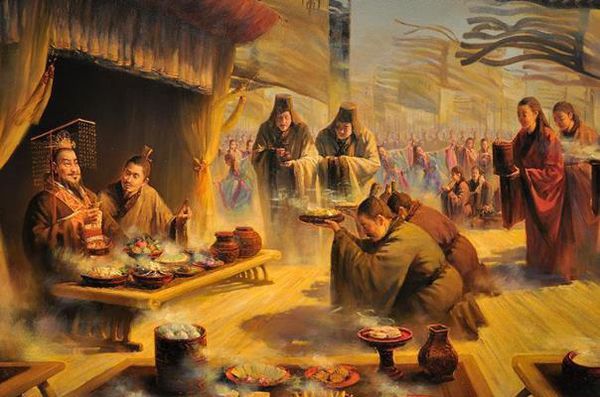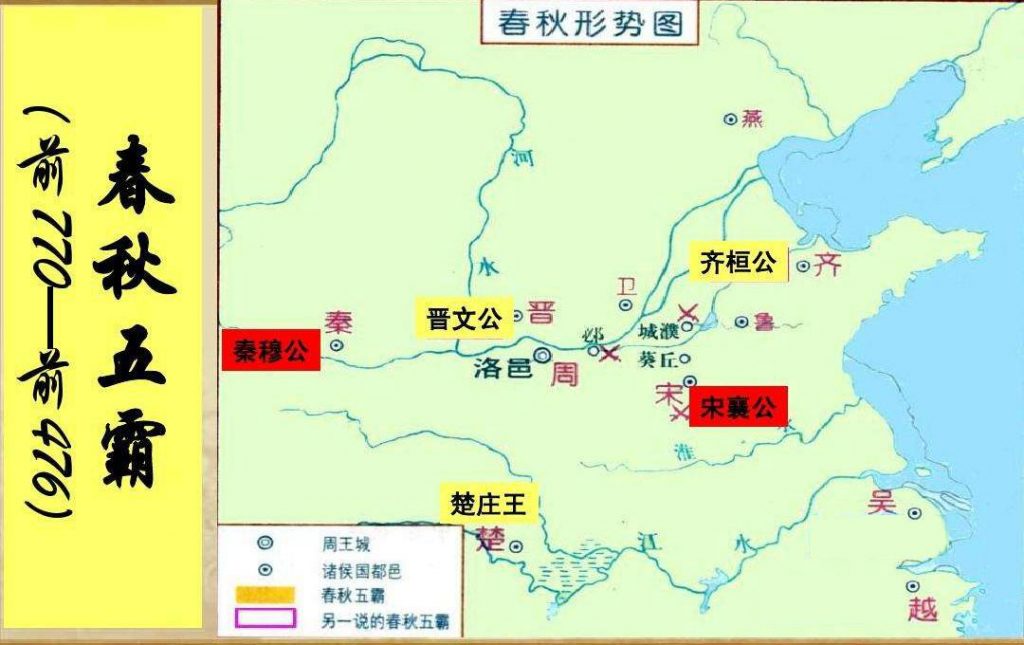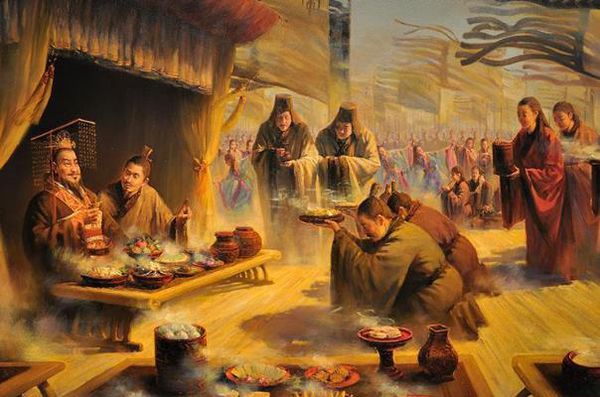The Five Powers in the Spring and Autumn Period and the Seven States in the Warring States Period
4 min readIn BC 770,the second year after the Western Zhou Dynasty ended,Emperor Pingwang of the Zhou Dynasty relocated the capital to Luoyi(today’s Luoyang,Henan),which is known as the Eastern Zhou in history.The Spring and Autumn Period(770-477BC)was named after the State of Lu’s chronicle Spring&Autumn,and the Warring States Period(477-221 BC),was named after the conflicts among states for the throne.
During this 550-year period,the power of the court declined and retreated to a small vicinity of 600 Li.Vassals stopped paying visits or tributes to the court,and the king,therefore,had to”announce a state of hunger”and”beg for money and chariots”and thus became highly dependent on vassals.King Huanwang of the Zhou Dynasty was even shot by troops of the Zheng and lost his dignity as a king. Vassals waged hundreds of wars against each other in order to make expansion.China successively underwent two historical periods,for example,the Spring and Autumn Period with five hegemonies,and the Warring States Period with seven powers.

Duke Huan of Qi took the lead to seek hegemony in the Spring and Autumn Period. After taking power, he named Guan Zhong as the prime minister, who later launched large-scale reforms. Economically, Guan Zhong encouraged reclaiming barren land and trading businesses. Militarily, he organized strong armies, and politically, he highlighted the slogan of “respecting the king and dispelling aliens,”joining hands with all the states in the central plains and working to safeguard advanced Chinese culture. In BC 651, the State of Qi initiated a meeting of all the vassals in Kuiqiu, which the king of the Zhou Dynasty sent a representative to attend. That established the hegemonic position of Duke Huan of Qi in the central plains.
The states of Jin and Chu rose successively after the State of Qi. After decades of exile, Duke Wen of Jin returned to his home state, taking the throne and makingvigorous effort to rejuvenate his country. Defeating the troops of Chu in Chengpu Battle in BC 632, he organized a meeting of all vassals where his hegemonic positior was established. The State of Chu in the South thrived once again after Duke Zhuang took the office. In BC 606, the troops of Chu threatened Luoyi, capital of the Zhou Dynasty, and brazenly asked about the size and weight of the Ding of Zhou, which apparently showed his ambition to replace the king of Zhou. Before long, his troops marched northward once again, defeating the troops of Jin at Bi and resulting in the hegemony of Duke Zhuang of Chu.

In the late Spring and Autumn Period,the states of Wu and Yue in the South rose to hegemony in succession.The State of Wu in the lower reaches of the Yangtze River captured the capital of the State of Chu in BC 506.It also later swallowed the State of Yue in the Qiantang River basins,defeated the troops of Qi in the North and met all the vassals at Huangchi,Henan.King Goujian of Yue,after being defeated and captured,endured much humiliation and hardships for 20 years.But he finally conquered Gusu,the capital of Wu,by dispatching troops at a time when KingFuchai of Wu had squandered all the national wealth.He further merged the State of Wu years later and marched into the central plains,becoming the last hegemony in the Spring and Autumn Period.

In the early Warring States Period, the patriarchal and fief system was destroyed and the king’s privileges were transferred to lower levels. Some ministers and senior officials who grew to be important players because of implementing reforms gradually carved up and replaced the privileges and positions of former vassals, paving the way for them to come into power. In BC 403, the statesof Han, Zhao and Wei divided the State of Jin, and Tianshi,a senior official of Qi, replaced Jiangshi to become the vassal. The wars among vassals got more frequent, resulting in the pattern where seven powers, known as the states of Han, Zhao, Wei, Qi, Chu, Yan and Qin, coexisted and fought against each other to seek hegemony. Following the dominance of Marquis Wen of Wei in the central plains, the hegemony-seeking war between Qi and Wei, and the confrontation between Qin and Qi, the State of Qin grew strong through Shang Yang’s reforms. Qin defeated the troops of Zhao at Changping in BC 260, which led to the rise of Qin and the chaotic situation of “vertical alliance and horizontal collaboration.
The wars in the Spring and Autumn and Warring States periods brought serious disasters to the people and broke the old social order to pave the way for a new system. The five powers of the Spring and Autumn Period-namely Qi, Jin, Chu, Wu an Yue(or Qi, Song, Jin, Qin and Chu)-and the seven states of the Warring States-namely Qi, Chu, Yan, Qin, Han, Zhao and Wei-all strived for reform and rose toward a new reunification.








